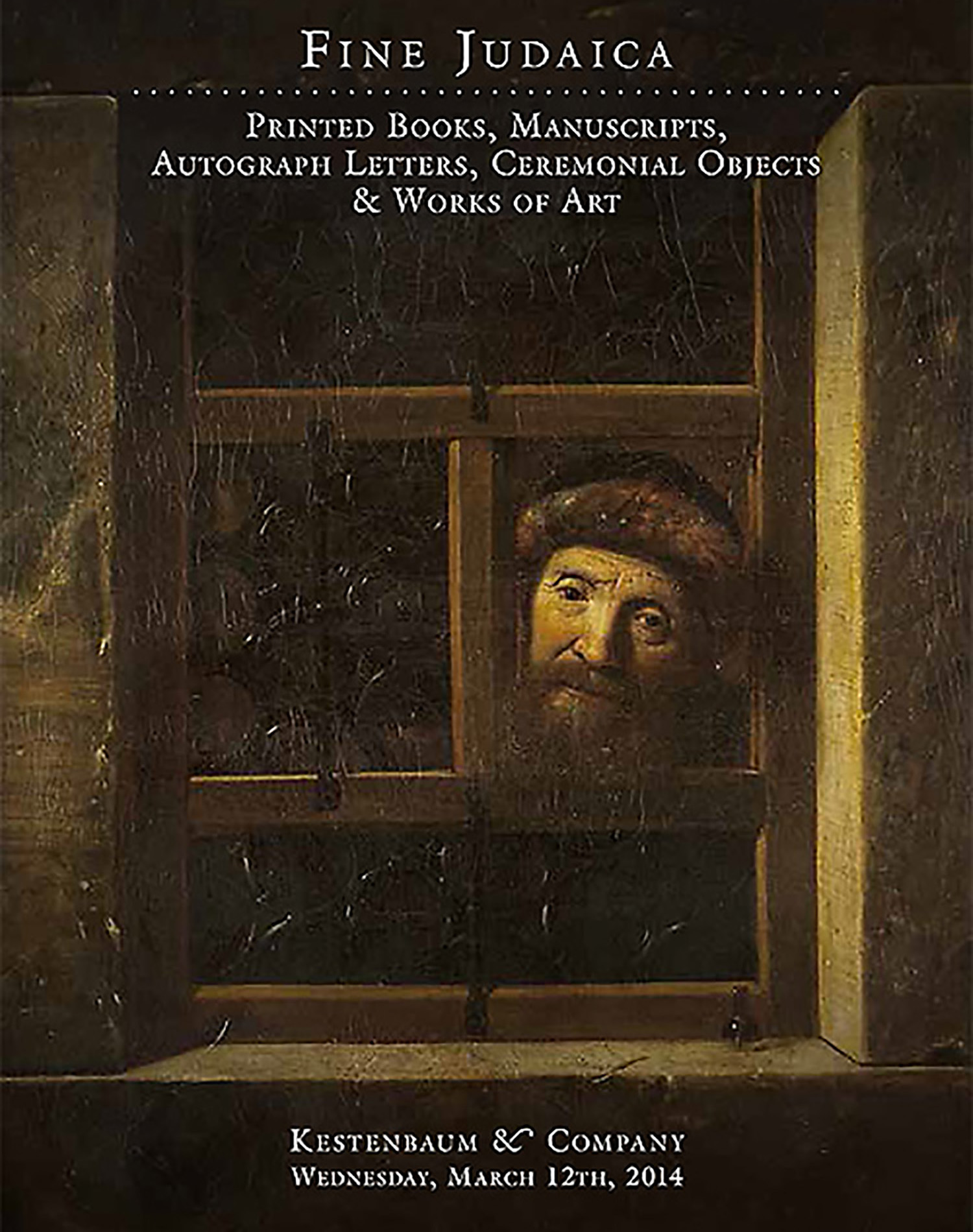EXQUISITE RUSSIAN SILVER CHANUKAH LAMP.

AUCTION 61 |
Wednesday, March 12th,
2014 at 1:00
Fine Judaica: Printed Books, Manuscripts, Autograph Letters, Graphic Art and Ceremonial Objects
Lot 471
EXQUISITE RUSSIAN SILVER CHANUKAH LAMP.
Zhitomir, circa 1870
Est: $100,000 - $150,000
<<A REMARKABLE RUSSIAN CHANUKAH LAMP OF INTRICATE DETAIL.>>
This handsome example bears many similar features to other Chanukah lamps of this era and geographic region. A strikingly similar lamp from Kiev, 1890s (see Skinner’s Boston, May 21st, 2009, Lot 176) share many design details, including the triple arched backplate, winged griffins, pair of columns, bench front, extended openwork frame and Jewish iconographic symbols. Our example bears the following devices: the lions of Judah, the Priestly hands, the grape cluster and vine, the crown, and the two tablets of the Decalogue. Additionally, our example has two lions atop the round columns, one holding a trumpet, the other a shofar.
The trumpet motif has been found on other examples of Chanukah lamps (see: S. Braunstein, Luminous Art: Hanukkah Menorahs of the Jewish Museum, New York (2004) item 14, an early 18th century German example.) However, there, a hunter is sounding the trumpet – a known use to call the Jewish People to war - and is alongside a shielded soldier, Judith and a dancing woman – clearly a reference to military victory, and specifically of the victory of the Maccabees over the Greek oppressors of the Chanukah story.
Another context for the trumpet symbolism is its association with the golden trumpets blown by the High Priests around Jerusalem to convene the Jewish People in the Temple for Hakhel – the practice of gathering the Jewish Nation together to hear the reading of the Torah by the King of Israel once every seven years.
However, in our example, the lion-held trumpet mirrors a second lion holding a shofar. The presence of the shofar is most unusual on a Chanukah lamp. Although there is no connection between Chanukah and the Jewish New Year – when a shofar is blown ceremoniously to awake the Jewish Nation to judgment – the use of the trumpet and the shofar together is a reference to the coming of the Messiah as their use is reserved for the days of the Temple. In the Book of Psalms, King David references the future “With trumpets and the sound of a shofar, raise your voices before the King, the Lord” (98:6). The trumpet and the shofar will be blown to announce the coming of the Messiah.
Provenance: From the Collection of the late Ami Brown, Tel Aviv, Israel.
